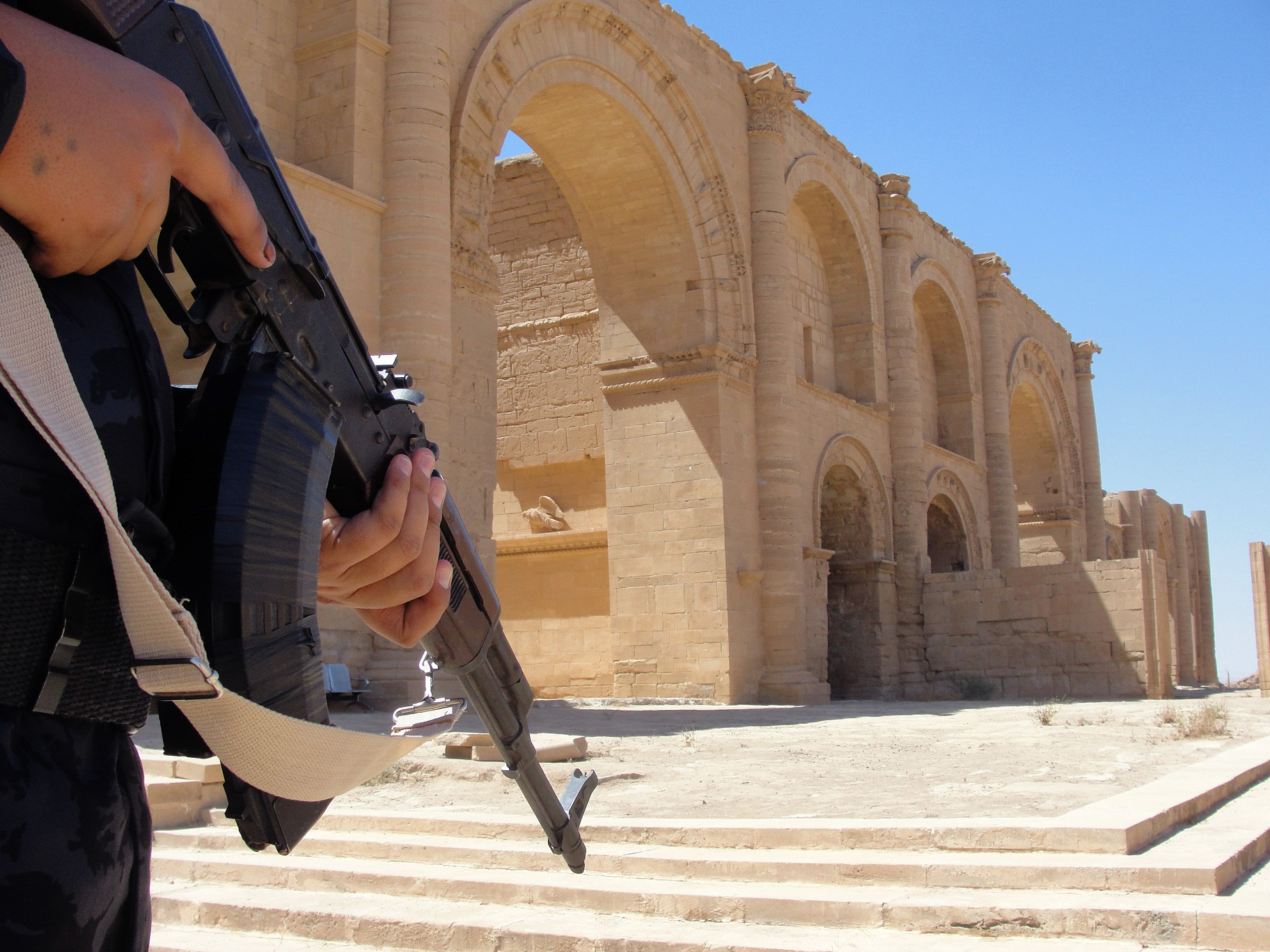
As coalition airstrikes attempt to curb the expansion of Islamic State in Iraq and Syria (ISIS or ISIL), the radical Islamist group is digging in militarily as it is simultaneously digging out priceless and irreplaceable historical antiquities—in some cases with heavy earth-moving machinery—which it sells on the black market to fund its Caliphate ambitions. By doing so, a significant amount of ISIS assets are out of reach from traditional counter terror finance measures.
Illicit trafficking of all kinds affords ISIS a diverse income stream that many corporations would envy, and a good deal of attention has been paid to ISIS trafficking in humans, weapons, and commodities, such as oil. These illicit funding sources are more reliable and profitable than foreign donor money, and they make ISIS financially self-sufficient. However, although UNESCO recently confirmed that ISIS is trafficking in art and antiquities to finance its operations, the issue has received little attention in the press or in policy-making circles, despite tens of millions of dollars of revenue obtained through such activities.
ISIS is surprisingly proficient in pillaging and profiting from the rich cultural history of the Fertile Crescent. While obtaining exact data is difficult, antiquities trafficking is now thought to be the group’s second largest source of revenue, after oil, which the U.S. Treasury estimates generates approximately $1 million of revenue a day. These profits are now particularly critical for ISIS because the U.S.-led coalition continues to target ISIS-controlled oil fields and refineries, and Turkey has finally started to crack down on black market oil sales.
Recent reports indicate that a more sophisticated looting system exists than previously thought. Local sources in Syria and Iraq have told archeologist Michael Danti that they believe looting is now the second-most common occupation in areas under ISIS rule. The group exploits Islamic law to legitimize looting, which the West would consider illegal financing. The Islamic khums — a Quranic-derived tax — calls for one-fifth of the value of war spoils or buried treasure to be paid directly to the ruling authority, and ISIS interprets this law to its advantage by excising a 20 to 50 percent tax on looted goods.
These looting and trafficking operations are nothing new. Organized crime in Iraq has been profiting from the exploitation of antiquities since the early 1990s, and following the 2003 US invasion, extremist groups worked with looters to develop what became a massive illegal industry. Many of the earlier looters and trafficking networks are once again flourishing, some of which had direct ties to al Qaeda in Iraq—the group from which ISIS evolved.

Attacking cultural heritage sites is another sinister but effective strategy for extremists, who profit by “cleansing” earlier cultures’ historic icons, including the destruction of important tombs and giant statues. by ISIS. These demolitions occur only after a systematic looting of the goods found inside, which allows ISIS and others both to profit from selling the valuable artifacts and to advance their brand through the media coverage of these cultural atrocities.
The ongoing war makes it impossible to calculate the amount ISIS has earned from smuggling antiquities. However, an arrest in Mosul, Iraq, two weeks before it fell to ISIS offers a glimpse into the group’s financial records and the revenue it derives from antiquities. Between the time ISIS began operating in Syria in the late 2012 and the arrest of one of their most trusted messengers in June 2014, the al-Nabuk region of Syria alone is claimed to have added $36 million to ISIS coffers through antiquities trafficking.
Anecdotal evidence also indicates that ISIS is leveraging well-established organized crime networks to traffic artifacts to countries such as Lebanon, Jordan and Turkey, where the items are exchanged for cash and weapons before being sold to international buyers. In Lebanon, ISIS takes requests for specific types of antiquities that are then looted and delivered—much like ordering from L. L. Bean.
ISIS has gone far beyond traditional sources of financing, such as private donors and money laundering, which has made U.S. and coalition efforts to target illicit financing activities less effective. As former treasury official Matthew Levitt succinctly put it, “Our ability to counter ISIL’s local criminal enterprises is severely limited.” The antiquities market has always been difficult to regulate, even in peaceful times, but with no effective law enforcement presence on the ground to discourage looting, this activity is sure to continue to rob the world of some of its richest cultural history—while funding one of the world’s most abhorrent terrorist organizations.




